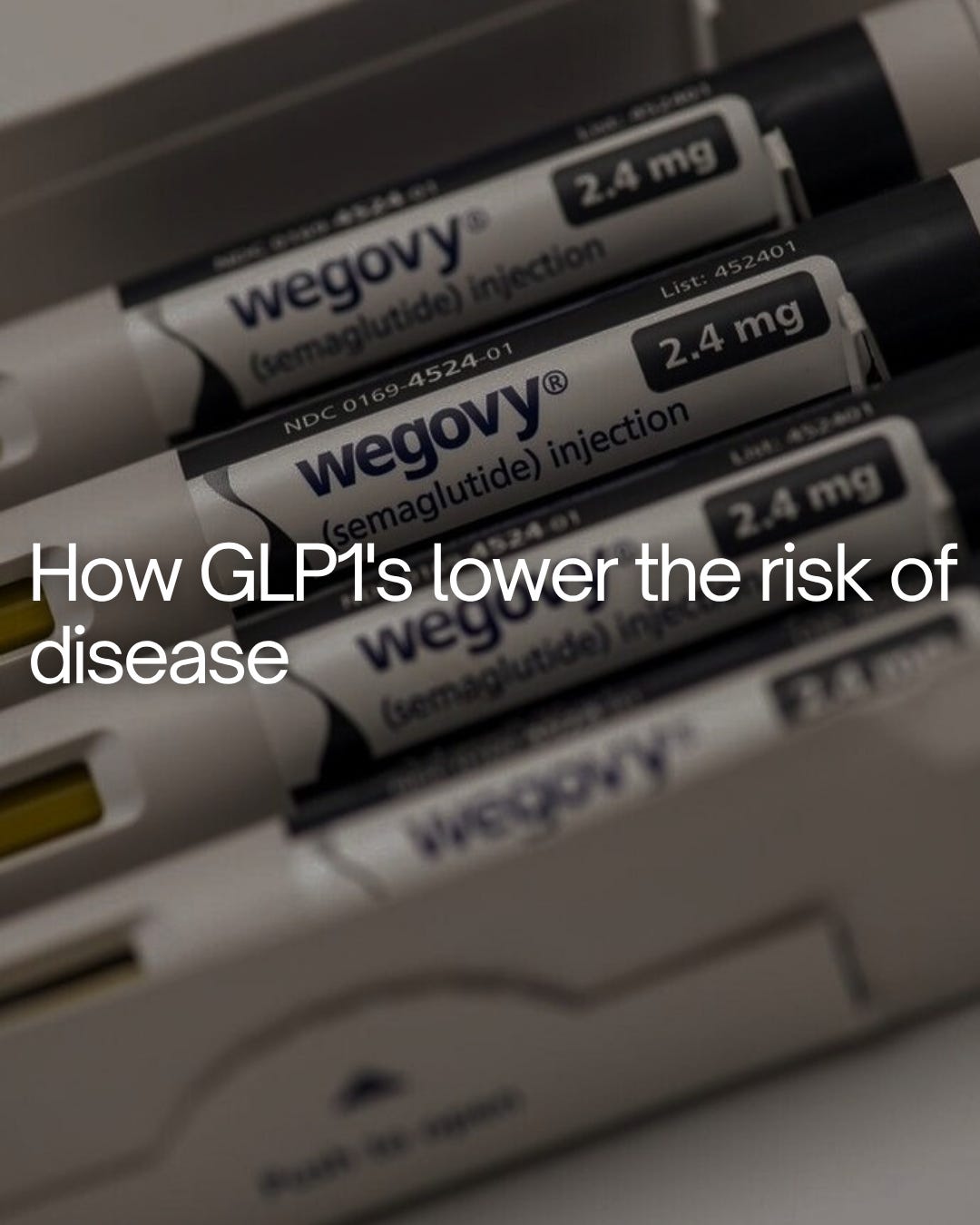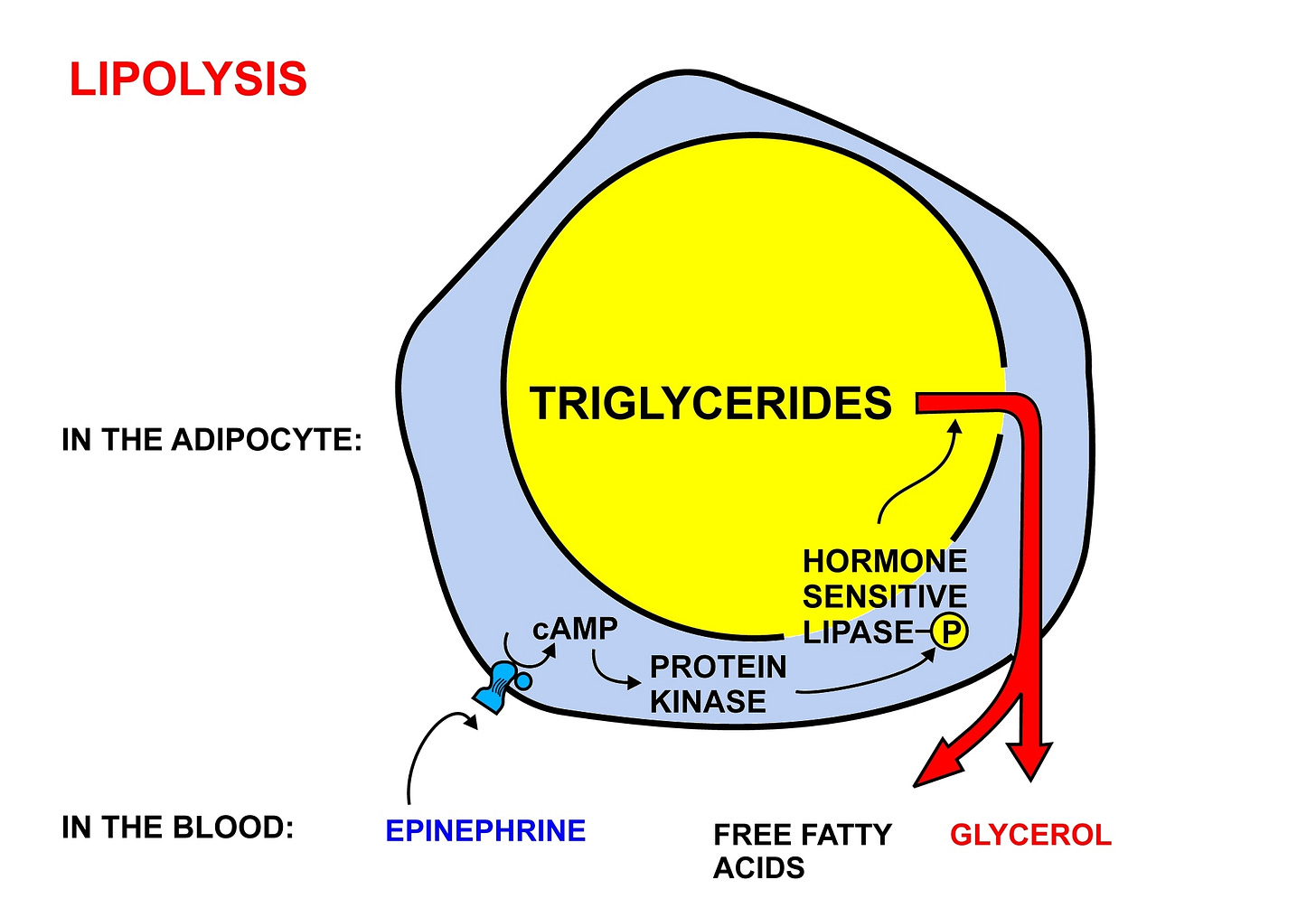How GLP1's lower the risk of disease
Drop Dogmatism #38
So as some of you may know by following me through X, I have issues with avoiding dogmatism. I like to use what works and discard what doesnt. As the legendary Bruce Lee said, “Absorb what is useful, discard what is useless and add what is specifically your own.”
I have found that in my years of practice within multiple realms of human endeavours that viewing potential interventions through an emotional bias can shut you off from opportunity.
Something we are beginning to seeing now with GLP1s like ozempic, retaurtide etc. This is due to a negative opinion surrounds these drugs because to their place of origin. (big pharma)
i on the other hand like to look past this and see what we can extrapolate to benefit everyone
So lets look through the lens of logos of why GLP1s can benefit starting with lipid buffering.
Lowering the amount of adipose tissue you carry is one of the most protective things you can do for long-term health.
Excess fat storage drives inflammation, insulin resistance, and organ damage via lipotoxicity. Healthy fat loss improves nearly every marker of metabolic and cardiovascular health.
Understanding Lipid Buffering and Lipotoxicity
Our bodies have a remarkable system for managing the fats (lipids) we consume and store, and at the heart of this system is our adipose tissue (body fat). Think of your adipose tissue as a sophisticated “lipid buffer.” Its primary job is to safely store circulating lipids, like triglycerides and free fatty acids, keeping them from spilling over into other parts of the body where they don’t belong. This buffering action is crucial for maintaining metabolic health. When you eat a meal, your adipose tissue suppresses the release of fatty acids into your bloodstream and increases the clearance of triglycerides from your blood. This process, known as “fatty acid trapping,” is a key part of the buffering system. It prevents a sudden flood of fats from overwhelming your system.
However, this buffering system has its limits. When it’s impaired, either due to obesity or a lack of sufficient adipose tissue (as in lipodystrophy), it can’t effectively manage the lipid flux. This is when we start to see problems. When the lipid buffering system fails, our other organs and tissues are exposed to an excessive flow of fatty acids. This is a condition known as lipotoxicity, which literally means “fat toxicity.” It’s the harmful effect of high concentrations of lipids in cells of non-adipose tissues. These tissues, such as the liver, skeletal muscle, heart, and even the pancreas, have a very limited capacity to store fat. When they are forced to take in excess lipids, it leads to cellular damage and a cascade of negative consequences, including non-alcoholic fatty liver disease (NAFLD), type 2 diabetes, and cardiovascular disease.
How GLP-1s Enhance Lipid Buffering and Reduce Disease Risk
This is where GLP-1 receptor agonists (like semaglutide and tirzepatide) come in. They don’t just help with weight loss; they fundamentally improve your body’s ability to handle lipids, directly enhancing your lipid buffering capacity and reducing your risk of metabolic diseases.
The Core Mechanisms
GLP-1s work through several powerful mechanisms to improve lipid metabolism:
•Enhanced Lipoprotein Lipase (LPL) Activity: GLP-1s increase the activity of LPL, the gatekeeper enzyme that pulls triglycerides out of your bloodstream to be safely stored in your adipose tissue. This leads to better triglyceride clearance and lower circulating lipid levels.
•Improved Adipose Tissue Function: GLP-1s have a direct effect on your fat cells, making them better at their job. They improve the insulin sensitivity of adipose tissue, which means your fat cells are more responsive to insulin’s signal to store fat. This is especially true for dual-agonists like tirzepatide, which also targets GIP receptors that are abundant in adipose tissue. This enhances the post-meal lipid buffering capacity of your white adipose tissue, preventing that harmful ectopic fat deposition [1].
•Reduced Hepatic Lipogenesis: GLP-1s help to reduce the production of new fats in the liver, which is a major contributor to fatty liver disease and overall metabolic dysfunction.
•Promotion of Adipose Browning: Some research suggests that GLP-1s can help to convert white adipose tissue (the storage form of fat) into more metabolically active brown adipose tissue [2]. Brown fat is packed with mitochondria and is excellent at burning fat for energy, which further improves your metabolic health.
•Appetite Regulation: By slowing gastric emptying and acting on the brain’s satiety centers, GLP-1s reduce overall food intake. This means there’s less lipid load for your body to deal with in the first place, taking pressure off your lipid buffering system.
The Big Picture: Reducing Disease Risk
By enhancing your lipid buffering capacity, GLP-1s directly combat the root causes of many metabolic diseases. When your adipose tissue can safely store fats, you prevent the lipotoxicity that damages your liver, muscles, and pancreas. This, in turn, reduces inflammation, improves insulin sensitivity, and lowers your risk of developing type 2 diabetes, NAFLD, and cardiovascular disease.
So, while the weight loss effects of GLP-1s are certainly impressive, it’s their profound impact on lipid metabolism and the body’s ability to handle fats that make them such a powerful tool for improving long-term health and reducing disease risk.
References
[1] Bhusal, A. (2023). Advent of tirzepatide: boon for diabetic and obese?. Annals of Medicine and Surgery, 85(2), 71–72. https://doi.org/10.1097/MS9.0000000000000173
[2] Bu, T., Sun, Z., Pan, Y., Deng, X., & Yuan, G. (2024). Glucagon-Like Peptide-1: New Regulator in Lipid Metabolism. Diabetes & Metabolism Journal, 48(3), 354–372. https://doi.org/10.4093/dmj.2023.0277



